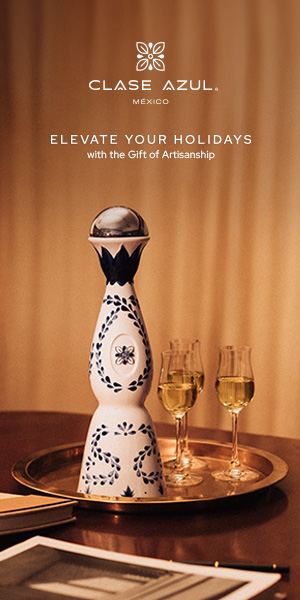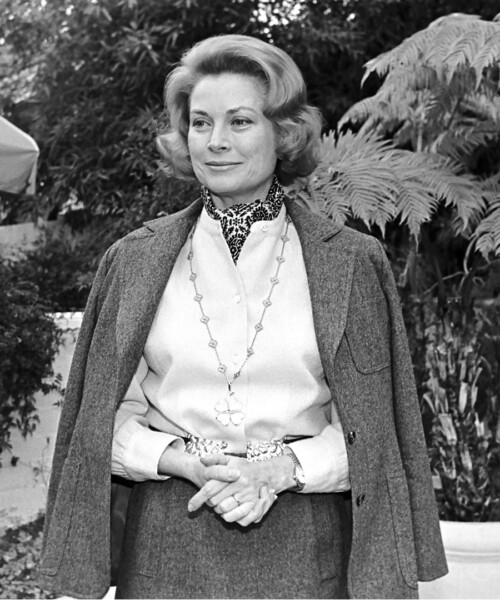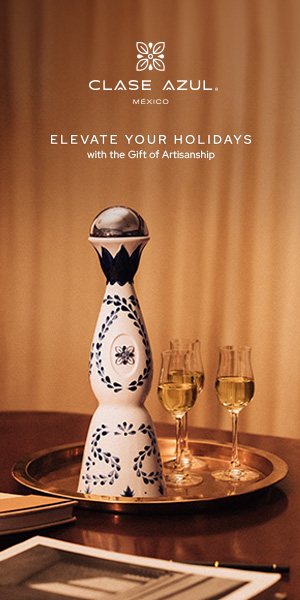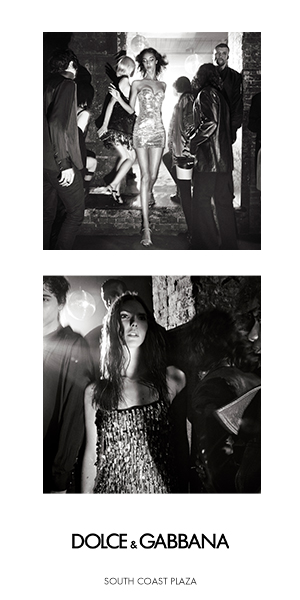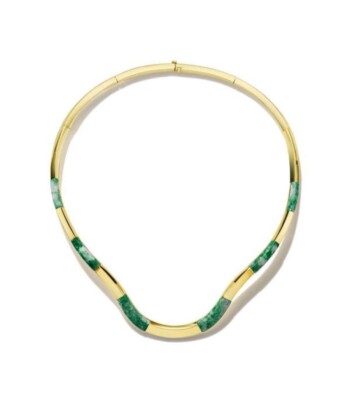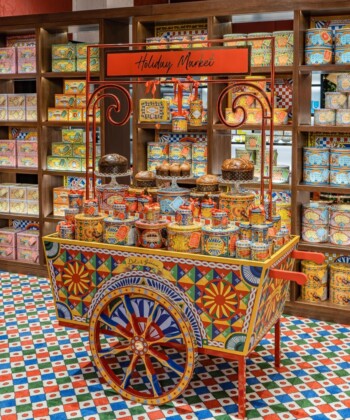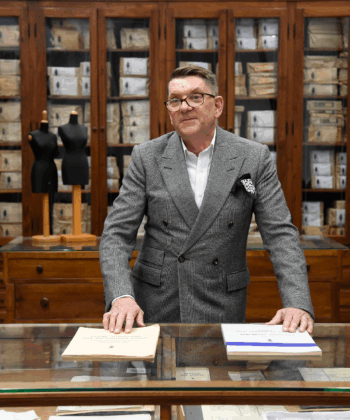Alain Bernard laughs when asked to name his favorite pieces within Alhambra, the iconic Van Cleef & Arpels jewelry collection that has spawned seemingly endless combinations of metals, gemstones and other materials since its debut 50 years ago. “I personally love color, so when we use coral or malachite, for example, those stones truly give life to the collection,” says Bernard, CEO of the Americas for the Paris-based jewelry house. “But I also really appreciate the very classic styling, such as black and white in onyx and diamonds.”
Alhambra’s clover motif was the brainchild of Jacques Arpels, nephew of Estelle Arpels, who founded the eponymous jewelry house in 1906 with her husband, Alfred Van Cleef. (History books will tell you Alfred founded the company with his father-in-law, gem dealer Salomon Arpels, but Estelle’s own passion for precious stones influenced the house from its beginnings.)

An Alhambra 50th-anniversary bracelet in gray mother of pearl and diamonds set in 18-karat rose gold.
A second-generation family member who joined Van Cleef & Arpels in 1932, Jacques was a big believer in the role luck plays in one’s life and was fond of giving four-leaf clovers found in his garden as gifts, often accompanied by poems he had written. His devotion to the idea of the four-leaf clover as a talisman led Jacques to create the first Alhambra necklace in 1968, a lengthy gold sautoir highlighted by the repeat of the diminutive clovers stationed at equal intervals.
From the beginning, each clover has been edged in “gold pearls,” a textured detail that, not unlike a more traditional lucky charm, invites a woman to touch the piece while wearing it. But Jacques also had other thoughts in mind. “How it became an icon is not by accident, rather, it’s a story of passion, creativity and newfound freedom,” Bernard says.

Claude, Pierre and Jacques Arpels.
Fashion trends in 1968 were undergoing a sea change. Yves Saint Laurent had founded his Rive Gauche ready-to-wear boutique in Paris two years earlier, creating a democratic approach to women’s clothing that was both elegant and an affordable alternative to haute couture (he would open his first New York boutique in 1968). Designers like Paco Rabanne and Mary Quant, meanwhile, had embraced miniskirts as part of a bold new stance that mirrored the growing sense of feminism taking hold in Paris, London, New York and points beyond. It was within this environment that Jacques Arpels sought to create a jewelry collection that also conveyed a modern attitude, as well as a sense of effortlessness and versatility the wearer would appreciate.
“It was such a rich time from so many angles,” Bernard says of the period. “There was this tremendous unleashing of creativity and a celebration of the increasing power of women,” he says. “Elegance, freedom, versatility, and the ability to be bold and audacious in your choices—this is the personality that is deeply embedded in this jewelry.” Grace Kelly and Romy Schneider were among the women who wore early Alhambra designs, while Jane Fonda, Reese Witherspoon and Blake Lively can often be seen wearing current pieces.
Yet, even as Alhambra has continued to evolve, the techniques used in creating the pieces have changed little over 50 years. Bernard compares the process to high jewelry, with every piece handcrafted in the Van Cleef & Arpels workshops, while an exhaustive search for well-matched stones is no different than the quest for perfectly matched emeralds or rubies destined for a high-jewelry necklace. “Sometimes it takes years to get the right stones and the right materials,” Bernard says. “We need to be patient. To wait one, two, five or 10 years, if that’s what is needed, that is what we do.”

Alhambra pieces are handcrafted in the Van Cleef & Arpels workshop.
To celebrate the anniversary, Van Cleef & Arpels released four limited-edition designs with prices ranging from $6,350 to $63,500: mother of pearl in deep gray, paired with pink gold and diamonds; white gold with onyx and diamonds; yellow gold with rock crystal; and yellow gold with lapis lazuli and diamonds. The latter two designs should draw intense interest among collectors, especially the lapis, which hasn’t been seen in Alhambra since Jacques Arpels released the initial 1968 styles.
“I am with clients almost every day, and there is an unmistakable addiction about Alhambra,” Bernard says. “All you have to do is check social media; everything you ever wanted to know about Alhambra is there. Collectors are always waiting for the next piece to come, and rumors are flying around all the time.”
Fifty years after Jacques Arpels’ first necklace, one aspect is sure to remain a constant, Bernard says. “We love to explore nature, it’s a big part of the DNA of Van Cleef & Arpels, but always in a positive and benevolent way. As we like to say, ‘Our animals have no claws, and the roses have no thorns,’” he notes. “Alhambra is simply very happy jewelry, and it’s limitless. That’s the beauty of creating in our world.” vancleefarpels.com
Main image by Georges Rose/Getty Images/Hulton Archives (Grace Kelly)
All other images courtesy of Van Cleef & Arpels























